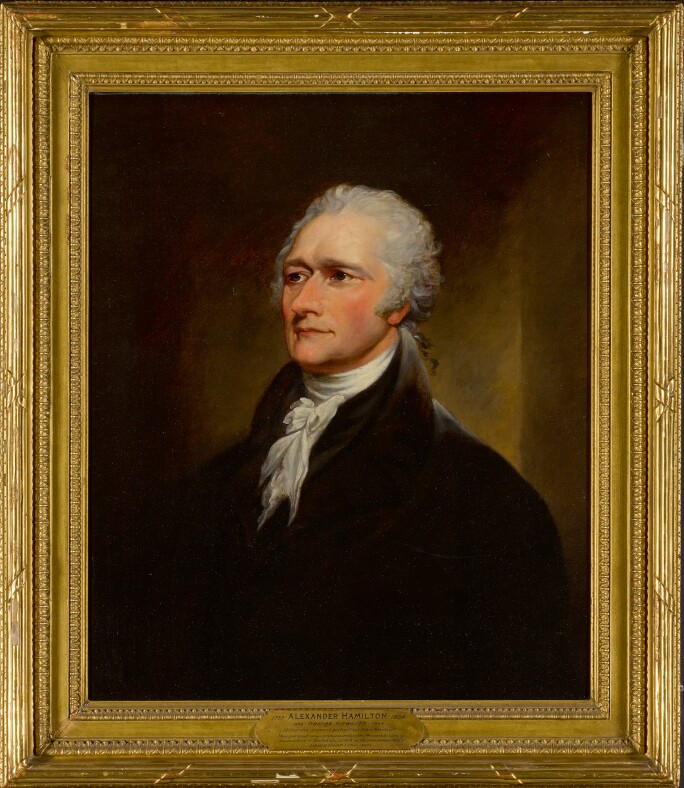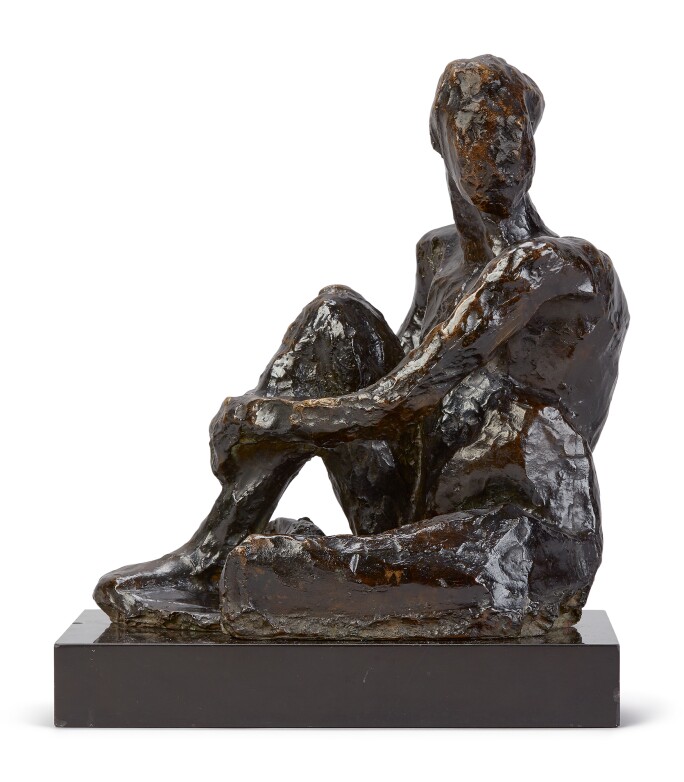Ira A. Lipman’s bravery and never-ending curiosity defined his remarkable life, as well as his approach to collecting.
I
n 1949, when he was eight years old, Ira A. Lipman took an assignment for his father, Mark, a private investigator. His job was to enter a client’s store and buy something. While the till was open, he would ask to purchase something else, giving the cashier the opportunity to ring it up or pocket the money. Later, Ira’s father would check the till tape and report back to the owner, letting them know if their employee was honest or not.
For Lipman, who went on to found Guardsmark, one of the world’s premier private security companies, such early experiences shaped a life that was defined by a strong moral and ethical code. Later, when he was 16, racial hatred erupted at Little Rock Central High School, where Lipman was a student. Nine Black students – the Little Rock Nine – integrated the high school at the height of desegregation, and the violent response prompted President Eisenhower to send in federal troops. “You have to imagine what it was like for a sensitive Jewish boy growing up in Little Rock right after World War II,” he later recalled. “As time went on, there were more and more revelations about the Holocaust, and how the Nazis tried to destroy an entire people – my people – not because of what they did, but simply because of who they were… I couldn't understand how people could allow such things to happen.”


Lipman happened to meet NBC television correspondent John Chancellor around this time and became his inside source at the school. Lipman’s reports were shared, anonymously, nationwide, lending authenticity to Chancellor’s coverage of the events. Vigilance and social responsibility would become defining features of his character, informing his business ethos when he founded Guardsmark – named for his father – in 1963. At the time, he perceived an industry plagued by low-quality service, a lack of background checks for guards and poor compensation. He saw an opportunity to create a business built on the principles of quality and excellence. “I’ve been trying to change the perception of a security person as some guard walking around with a flashlight,” he told the Washington Post in 2003. “There’s a serious responsibility.”
Lipman created a corporate culture that separated Guardsmark from competitors, building an environment of trust, inclusivity and education. He respected the knowledge of experts, and routinely invited leaders in their fields to speak at the company: senior members of the military, FBI and CIA, as well as experts in infectious diseases, epidemiology and psychology, for example, all contributed to furthering education at the company. He demanded excellence and always pursued the best in knowledge and expertise. At its heart were notions he had carried within him since childhood.

“We had three words that my father put on the badge, the company seal: truth, courage and judgment,” says Gustave Lipman, the eldest of Lipman’s three sons, who, along with Benjamin and Joshua, all entered the security business. Those values empowered the company as it grew over the years, at its peak employing nearly 19,000 people and generating $500 million in revenue. “He never thought about being the largest. It was really about being the best,” says Benjamin.
And to be the best, in Lipman’s eyes, you had to soak up everything life had to offer: to be curious, and to want to learn. He took much inspiration from his wife Barbara. “He absolutely adored the concept of what my mother did,” says Gustave, “going back to college, getting her undergraduate degree in her early 40s, and then getting a master’s degree.” Barbara was a trailblazer in early childhood education, and one of the nation's most vocal advocates, recognised by University of Memphis, where they named the Children’s School the Barbara K. Lipman Early Childhood School and Research Institute.

“He would study artists and try to understand what they were thinking and experiencing – he would ask what was going through their minds when they created the work. My father was an investigator, he was curious.”

Like his wife, Lipman never tired of finding new subjects and exploring them with the full force of his investigative spirit. This naturally led to collecting, and he amassed a remarkable collection of prints and multiples by artists including Henri Matisse, Henri Toulouse-Lautrec and Pierre Bonnard, in addition to filling his library with some of the finest books and manuscripts. “One of the first artists he admired was Modigliani,” says Gustave. “He would study artists and try to understand what they were thinking and experiencing – he would ask what was going through their minds when they created the work. My father was an investigator, he was curious.”
The artist who intrigued him most was Henri Toulouse-Lautrec, whose lively depictions of fin-de-siècle Paris embodied the extravagance and theatricality of the time. “Lipman was never buying for investment,” says Mary Bartow, Senior Vice President and Head of Sotheby’s Prints department, “he was buying for love of this particular artist.” At one point, Lipman owned every single Toulouse-Lautrec poster that the artist had created. “He was very proud of this,” she says. He also acquired the rare group of prints by Toulouse-Lautrec known as the Elles series, which features 10 different images of women in their everyday lives, and which Bartow describes as “the most important suite of prints made in the 19th century, hands down.”


Lipman had a keen interest in history, particularly American history, born out of his own love of country. He looked to history’s heroes. “My father admired people who had the courage to take unpopular positions,” says Joshua. “He had a love for the founding fathers, and he understood the challenges that came with being a leader.” “He revered the great figures of American history,” says Selby Kiffer, Senior Vice President and International Senior Specialist for Sotheby’s Book and Manuscripts department. “George Washington, Thomas Paine, Thomas Jefferson, Alexander Hamilton and Abraham Lincoln among them – and he sought out books and manuscripts that illuminated their characters as well as their achievements.” In 2013, Lipman sold a portion of his library at Sotheby’s, including eight books from George Washington’s library for more than a million dollars. After that sale, he worked to build an even more impressive library.

(From left) GENERAL JEAN-BAPTISTE DONATIEN DE VIMEUR, COMTE DE ROCHAMBEAU, Plan des Envrions de Williamsbourgh, York, Hampton et Portsmouth. Virginia 1781. French manuscript military map prepared for the Franco-American siege of Yorktown. $200,000–300,000; ALEXANDER HAMILTON, Alexander Hamilton's appointment as aide-de-camp to General George Washington. "Head-Quarters, Morristown" [New Jersey], 1 March 1777. $180,000–250,000; DECLARATION OF INDEPENDENCE, the very rare first book-form printing of the Declaration of Independence, hurriedly appended to Robert Bell’s edition of The Genuine Principles of the Ancient Saxon, or English Constitution just days after Congress adopted the Declaration, $250,000–350,000; BAY PSALM BOOK, The only surviving copy of the seventh—and earliest obtainable—edition of the first book printed in British North America, printed in Boston in 1693, $300,000–500,000.
Ultimately, however, Lipman “loved when someone would enjoy his collection with him,” says Gustave, and took every opportunity to share his objects with those around him. “He would take people into his rare book room, his own private museum, and show them some of his treasures,” says Joshua. Lipman even filled his offices with art for the enjoyment of all of his employees.
This generosity extended to philanthropy where Lipman gave his time, leadership and resources. At the United Way, a national coalition of charities that focuses on education, health and income, Lipman was the first ethics chair following a scandal, and he worked to help restore confidence in the organization. He also served nearly forty years on the board of the Simon Wiesenthal Center, a Los Angeles-based human rights organisation that fights to combat anti-Semitism and promote tolerance education.
Among Lipman’s more poignant qualities was his fierce belief in truth through independent journalism. In 1995, he endowed The John Chancellor Award for Excellence in Journalism, now at Columbia University, giving $25,000 annually (increased to $50,000 in 2016) to a reporter with courage and integrity. “It is named for John Chancellor because he is my hero,” Lipman said at the time. “He was my hero at age 16 in Little Rock and he is my hero today.” Little did he know that, with his curious, vicarious spirit, Lipman had become something of a hero too.
The Passion of American Collectors: Property of Barbara and Ira Lipman will be sold in a series of auctions this autumn and winter, and throughout 2021.


